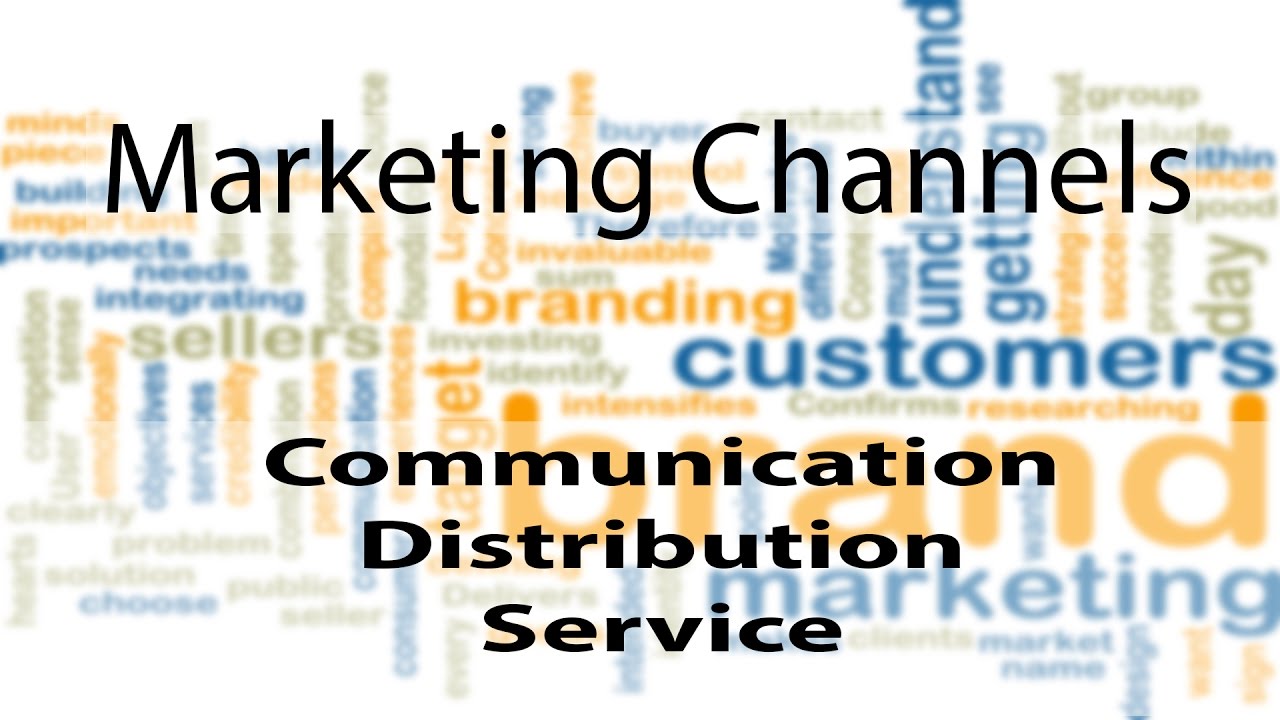Placement Strategies
Jul 31, 2019

Placement is the process of choosing the right distribution system for delivering products and services to target markets. A critical element of the marketing mix, placement decisions impact brand presence and market share alike. How you get your product to market can influence your positioning and make or break your budget. Depending on your resources and your demographic mix, the right placement strategy may include single or multiple channels.
Channel Marketing
Channel marketing: Employing other business entities as part of a sales, delivery, or service effort increases your ability to reach and influence targeted markets. Think of a channel as a pathway to customers. When planning your placement strategy, choose channel partners based on their connections with those customers whom you cannot reach or influence yourself.
TYPES OF MARKETING CHANNELS

Channel partners are a necessity for penetrating markets that are difficult to enter, due to geographic spread, physical and/or financial resources, human resources, or time constraints. Channel partners reduce overhead burdens while facilitating sales. Think of them as your outsourced distribution team for sales, delivery, and service needs.
1. Wholesalers
Wholesalers are often the first point of entry for products on their way to market. They purchase and resell goods as they are, rather than transforming them into other products. Wholesalers typically deal in high-volume orders and mark up the products before selling them to retail operations.
2. Retailers
Retailers purchase products, mark up pricing to cover their costs, and then distribute those products directly to consumers.
3. Brokers and Merchants
Brokers bridge relationships between buyers and sellers. Print brokers, for example, use specialized print industry knowledge to build relationships with a variety of print manufacturers (i.e., their vendors) and sell those vendor services directly to other businesses (i.e., their customers), in exchange for a commission. Brokers do not themselves purchase the inventory, as is the case with a wholesaler. Instead, they serve as middlemen. Merchants, by comparison, buy goods and resell them to other wholesale or retail buyers.
4. Joint Venture Partners
Joint venture (JV) partners are strategic collaborators who expose your products and services to their own customers. As opposed to wholesale and resale agreements based on pay-for-purchase arrangements, joint venture partners are typically paid a share of the sale, with profit sharing relative to the strength of their contribution.
Joint venture partnerships have become highly popular among Web marketers, especially sales trainers, coaches, and wellness experts. Later in this chapter, I will give you more information on building a joint-venture partnership.
5. Strategic Allies
Channel partners who are strategic allies may provide additional resources, such as a sales team, related products, distribution network, and financing. Think of GE Money Bank, which provides financing for contractors making in-home sales. Strategic alliances work best when there is a synergy between ally needs and clear terms outlining expectations, responsibilities, terms, and risks.
6. Affiliate Marketers
Affiliate marketers are usually e-retailers who help expose products and services, via their Web sites, in exchange for a reward, such as cash or gifts, when a sale is made. Tracking software and buying codes let companies know which affiliate referred which customer for which purchase. Affiliate marketers help drive traffic from one site to another, using special offers and product links.
7. Fulfillment Houses
After products have been ordered, fulfillment houses play an important role in executing delivery. This combination warehouse, order management, storage, and/or pick-and-packing service is often the last stop in the product-to-consumer continuum. Fulfillment houses may offer everything you need from literature and direct-to-individual print options on such things as branded premiums and promotional items, sales literature, and hard merchandise. Some fulfillment houses are industry specific, stocking food products, health and medical supplies, clothing, electronics, and pre-printed and/or customizable literature. Fulfillment houses may concentrate on a specialty, such as direct mailing or shipping. More robust fulfillment operations stock large quantities for customers, track inventory, and mail on demand.
8. E-procurement
An e-procurement channel facilitates almost instantaneous exchange of goods, services, and merchandise for consumer markets, business markets, and government markets. This technology-driven supply chain covers the full product-placement cycle, from online requisitioning, bidding, and payment systems to vendor management, sales help, online shopping carts, electronic order fulfillment, and inventory management. E-procurement offers cost efficiency and can speed up the fulfillment cycle. However, the vast exposure of products in the e-marketplace may push down pricing. E-procurement strategies, including competitive online auctions, shift the driving force from buyer emotion to seller action, in which vendors must cut prices to win the job. E-channels also include online stores, such as E-bay and Cafe-press, where sellers can set up shop in minutes.
9. Network Marketing
Also known as direct marketing groups, network marketing organizations serve as channels in themselves, hawking their own products. Network marketing companies, create a down-line of independent product distributors, who each earn income by selling company products directly to customers, and from commissions earned based on sales of other distributors they bring into the channel. The multilevel compensation plan typically is pyramid shaped, with early entrants receiving higher-level commissions and later entrants providing the base for commissions sent up-line.
10. RSS Feeds
RSS (Really Simple Syndication) feeds are a recently developed marketing channel, used on the Internet and broadcast electronically. They help marketers share content and reach more consumers by making it easy for others to plug your content into their own Web sites. If you manage unique, in-demand content that is updated in a regular, timely way, RSS feeds can link you to the visitors at other Web sites. Set up an RSS widget on your Web site, and other companies will be able to share your text, video, and audio content as soon as it is uploaded, in real time.
CAUTION
Before keying in or recording hours of content to stream worldwide or posting someone elses feed on your site clarify your expectations about how it will drive visitors to your own Web site and, ultimately, help you market and sell your own products.
11. Sales Force
Internal sales teams, telemarketers, and direct marketers tie your company to channel partners, business buyers, retailers, and/or consumers. Manufacturers representatives, who sell various products for multiple vendors, also can extend the reach of your sales force. Their broader product range and location mix can increase exposure to potential customers.
TRACK YOUR INVENTORY
Whichever marketing channel you choose conventional fulfillment or electronic procurement, Internet based or brick-and-mortar outlets protect your brand with rigid inventory management to ensure stock availability. Brand management demands that you do not disappoint customers.
CHOOSING CHANNELS FOR SUCCESS
The key to successful channel marketing is unlocking value. To market products cost effectivly, you may need to test drive or juggle alternative ways to create high value for your customers as well as your company. Integrate key members of your sales team in channel marketing discussions to pollinate strategies, pragmatize ideas, and gain buy-in on management decisions. Big firms with global product capabilities deal in multi-channel markets, with international brokers, buyers, wholesalers, shipping companies, and fulfillment houses. Smaller firms often create more direct supply chain networks. Regardless of the size of a business, technology has reshaped marketing channels, with the Internet driving commerce, and sophisticated electronic data systems used for order management and inventory control.
Whether you are targeting Internet shoppers, local retail shops, convenience stores, or warehouse outlets, your job is to maximize throughput in the most cost-efficient, brand-building way possible. Simply put, youve got to get your products to the right place at the right time for the right price. Marketing channels help companies build product visibility in ways that both attract retailers and build demand from end buyers. Once youve gotten your products into a store, catalog, or Web site, the final placement challenge is to arrange for a great in-store location. When making deals, work to secure shelf placement, end-cap, and/or point-of-purchase displays to maximize visibility. With online channels, strive for Web site advertising banners and link placements that best meet your needs.
Get Started Free
Try StoreMantis free for 7 days. No credit card required!